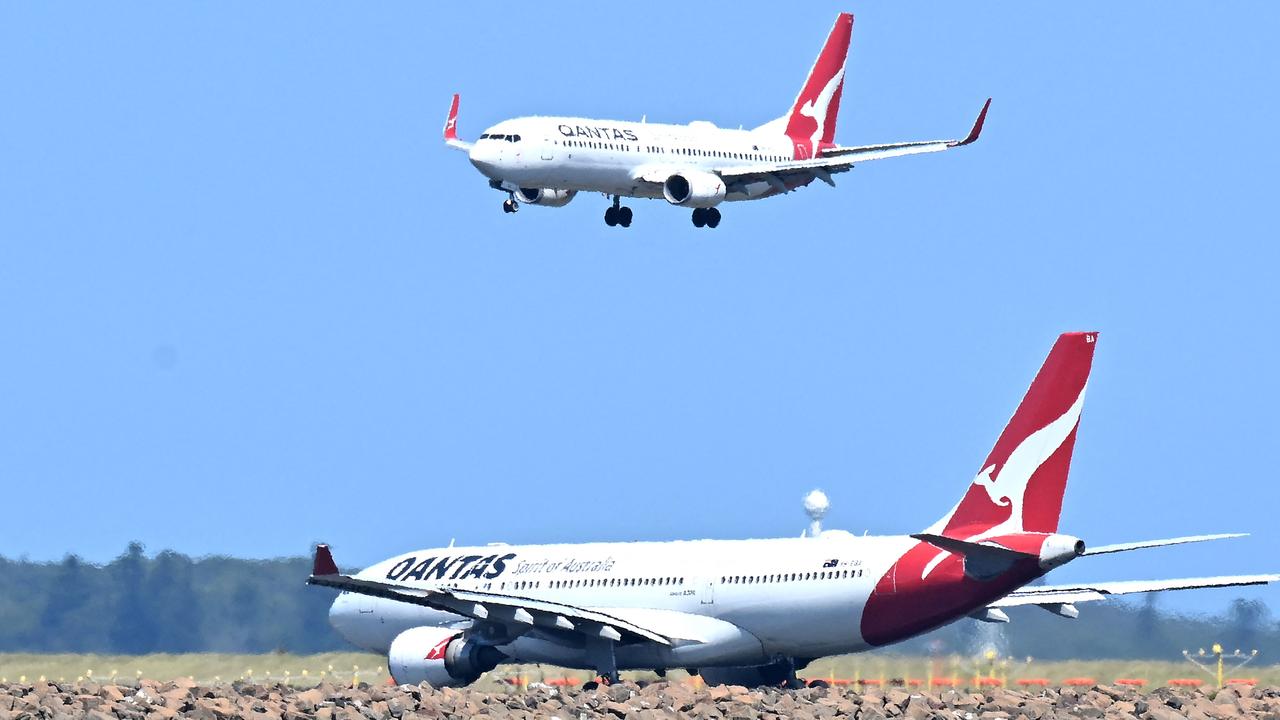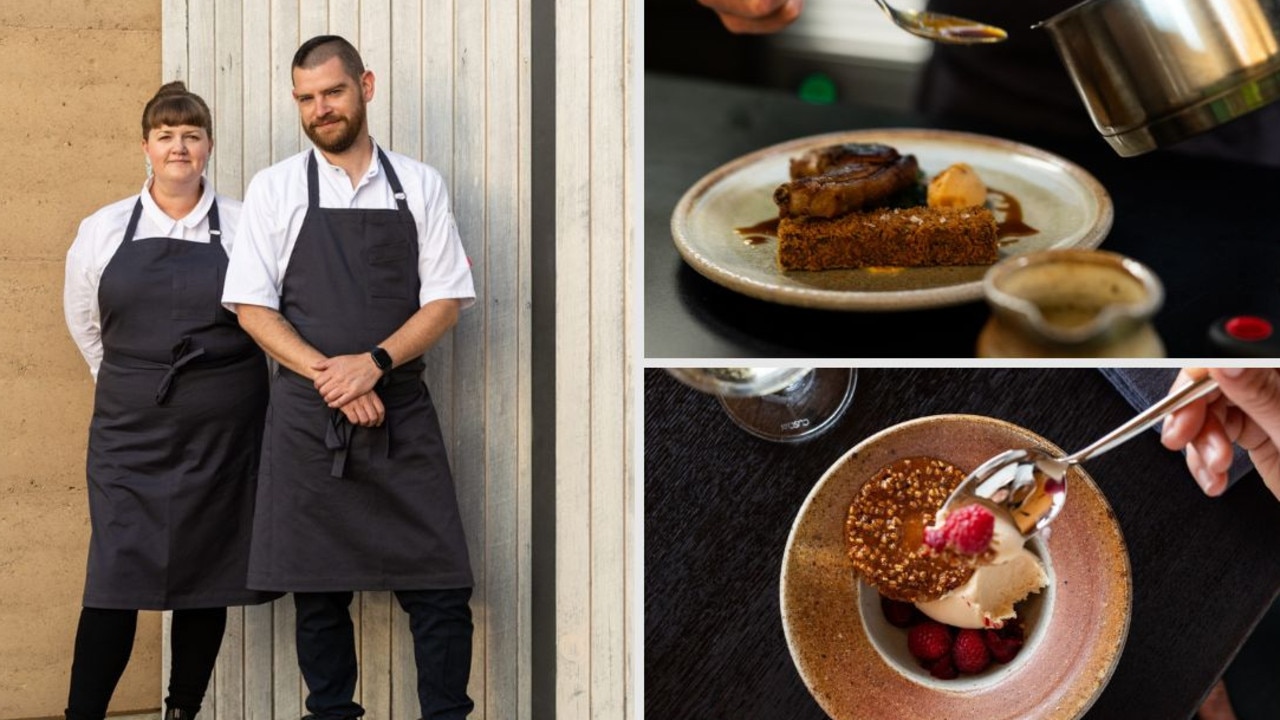TasWeekend: Tassie trailblazers are running wild
MATES Cody McCracken and Louis Balcombe epitomise the best in our young tourism trailblazers – an adventurous lot but also one with a social conscience – and their endeavour combining business, charity and a passion for the environment is one that is truly awe-inspiring.
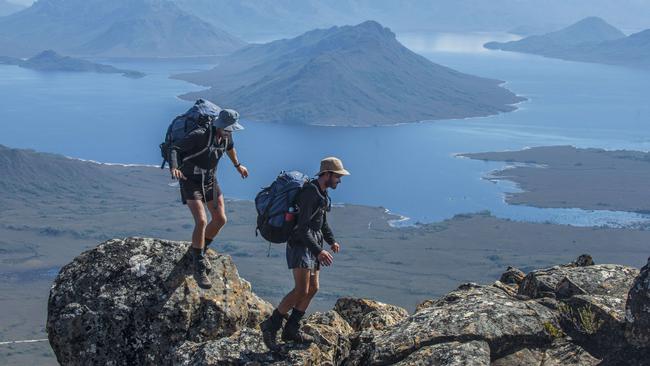
Travel
Don't miss out on the headlines from Travel. Followed categories will be added to My News.
IF all goes to plan, Cody McCracken and Louis Balcombe will be resting their weary legs today after a charity hike from Hobart to the Huon Valley Mid-Winter Festival.
The Wild Pedder hiking guides, along with Willie Smiths cider makers, organised to take a group of walkers on the two-day bush expedition via kunanyi/Mt Wellington to raise funds for emergency and crisis accommodation.
They were scheduled to set off from men’s shelter Bethlehem House, just up the street from Wild Pedder HQ in Warwick St, on Thursday, and arrive by dark yesterday in time for the ceremonial lighting of a Burning Man effigy at the pagan-inspired festival.
“We wanted to do something, particularly with what’s happening with people staying at the showgrounds, and seeing homelessness first-hand in the streets,” says McCracken. “With Bethlehem House being so close, we see people going to crisis accommodation all the time.”
A strong social conscience is part of the Wild Pedder DNA, as indeed it seems to be across a number of tourism operations created by enterprising 20 and 30 somethings in the state. Yes, they are young and idealistic, but their holistic approach is also a generational marker.
Tourism Millennials typically care. A lot. They ponder issues well beyond their bottom lines and the endless logistics that are part and parcel of the industry. Nature is sacred.
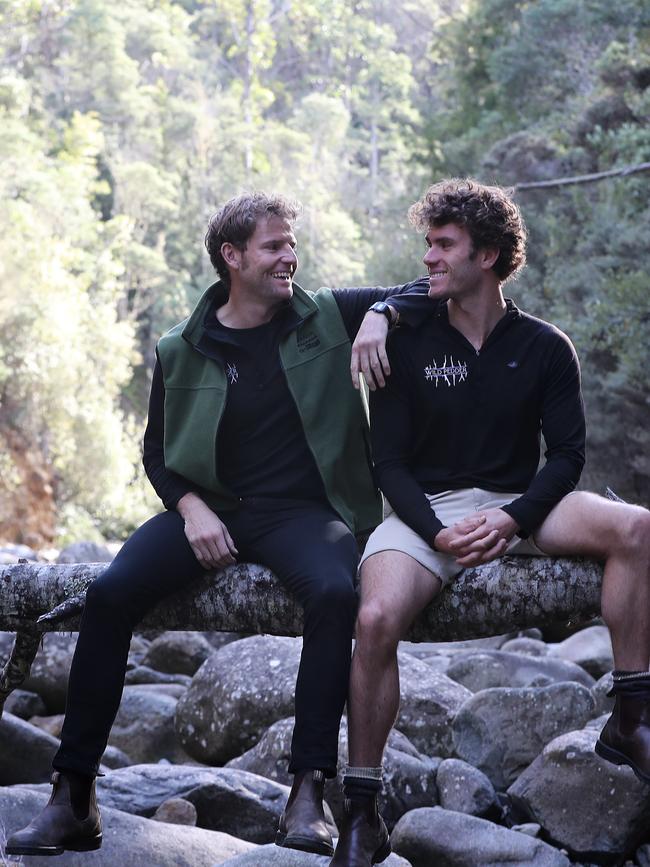
“We are fortunate to be able to operate with minimum impact on the environment,” says McCracken, 32, who launched Wild Pedder with good mate Balcombe, 31, in November, 2016. The pair met when both were guiding for the Tasmanian Walking Company, having left their careers in environmental management and civil engineering respectively.
The pair takes small groups on a sequence of day trips over four days, including inside the Wilderness World Heritage Area, returning them each evening to the comforts of Pedder Wilderness Lodge at Strathgordon, the former Hydro village on the shore of the flooded Lake Pedder.
They reckon returning guests to a warm base each night, rather than camping out, works particularly well in the wet and unpredictable South West.
The pair won silver for the category of New Tourism Business at last year’s Tourism Industry Council of Tasmania awards, coming second only to the Federal Group’s MACq01 hotel on the Hobart waterfront.
“Every time I look at our itinerary, it excites me,” says McCracken with a laugh.
Day one takes guests into alpine areas of Mt Field National Park. “Mt Field is very much about the vegetation and seeing it up close,” says McCracken. “Pencil pines that are over 1000 years old, amazing Cushion plants and living fossils like the Tasmanian Mountain Shrimp.
“It’s a little crustacean,” adds Balcombe, “it’s very easily walked past.”
“Unless you have a cracking guide to show you,” McCracken says with a laugh.
Our business depends on being connected with the community. It’s important to us that we feel we belong – Louis Balcombe
TasWeekend joined the Wild Pedder boys on a scoping expedition up the Sentinel Range in 2015 (they rock-hopped like mountain goats) and can vouch for their eye for detail and knowledge of flora and geo-curiosities. McCracken has a special thing for quartzite and dolerite. “He can talk about rock for 15 minutes and everyone is intrigued,” says Balcombe.
Their guests are typically blown away by the vistas when they ascend Mt Eliza in the Southwest National Park on day two. “You can probably see a quarter of Tasmania on a good day,” says McCracken. “Western Arthurs, Eastern Arthurs, Frankland Range, Frenchmans Cap, Bathurst Harbour, Port Davey, Mt Field, Mt Weld, Mt Picton, Mt Wellington …”
Day three is kayaking on the vestige of the old Lake Pedder. “That story about the [flooding of Lake Pedder in 1972] entwines in everything we do,” says McCracken. “It’s the basis for a lot of contention, and it’s the beginnings of the Greens party.”
The guides share stories and books with guests about the Tasmanian conservation movement and its late luminaries, including photographer Olegas Truchanas and painter Max Angus. While acknowledging the loss, they also find much to enjoy on the vast body of water today. “The lake is still very rugged and beautiful,” says McCracken. “It’s rare for us to see other people and we lunch on its secluded islands.”
They visit the Florentine Valley on the final day. “We head out there to some of the biggest trees in the world, with giant myrtle trees, sassafras and leatherwoods, along with huge eucalypts that tower above the valley like sentinels,” say McCracken.
Having a positive impact both on their guests, who are typically affluent, well-connected and potentially influential on environmental matters, and in their local community is part of the pair’s mission.
“Our business depends on being connected with the community,” says Balcombe. “It’s important to us that we feel we belong.”
They feel welcome in the tourism industry and say they have learnt a lot from their unofficial mentors, the Tasmanian Walking Company’s general manager Heath Garrett and Roaring 40s Kayaking operators Reg and Jenny Grundy.
“Businesses really do help each other out and if you are not keen to be a part of that, it must be a lot harder for you,” says McCracken.
As Wild Pedder gears up for its third November-April walking season, bookings are looking solid and the pair will soon be hiring extra guides as their first regular staff.
“We are starting to build the Wild Pedder family,” says Balcombe.
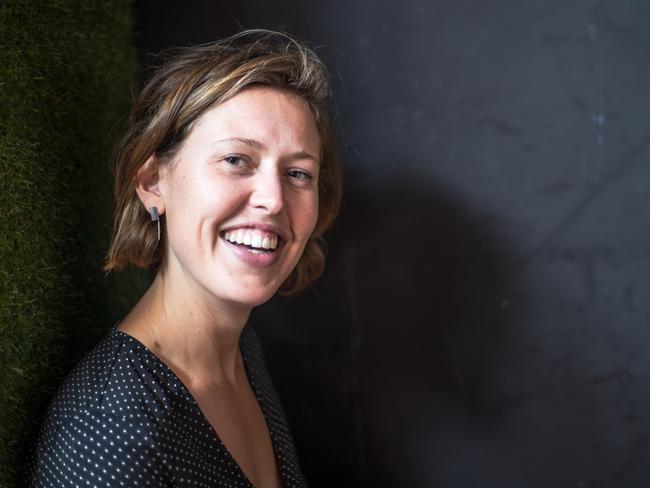
ON YOUR BIKE
As far as acronyms go, BAM! is pretty good. It describes the whirlwind experience of meeting young tourism gun Tara Howell well. It actually stands for Branding, Architecture and Marketing, which are three of the things she’s all about. But not the only three.
The 28-year-old tourism entrepreneur is high energy, as tourism guru Simon Currant could attest. He mentored Howell when she was just getting her mountain-biking enterprise, Blue Derby Pods Ride, rolling with her husband Steve.
“I don’t know how many times I called him. He’s so generous,” she says. “Simon, Simon, Simon, just give me 30 seconds, you don’t know who I am, I am a nobody, I know I’ve called you 20 times, but I really need you as my mentor. Can you please just meet me? I want to run an idea by you …”
“It’s so funny looking back,” she says, dashing in blue jeans, boots and a tailored jacket when we meet in Hobart at her other business, the S. Group, a combined architecture and marketing firm she co-directs with its founder Sam Haberle. “Simon and I are good friends now.”
She says she has benefited enormously, too, from a formal mentoring partnership at UTAS, where she was studying marketing and accounting, when she was matched with corporate culture change expert Tony Chapman. “Having someone older than you say what’s the first step [towards your goal] is incredibly powerful,” she says. “I put a lot of my success down to Tony’s support.”
The partnership with Sam Haberle and S. Group is recent. They merged his architecture firm, which had a small brand and marketing division, with her marketing consultancy a year ago, and have three offices, in Hobart, Launceston and Melbourne.
“We saw an opportunity to grow it and complement architecture,” she says of the convergence of the disciplines. “We call it BAM! We build a client’s brand, feed that into the architecture and then market it for them.”
I love what tourism does for the individual, giving them a perspective change that refreshes their life. But I also love what tourism does for the community. It showcases us to the rest of the world.
Tourism projects are a key focus for the S. Group. As well as taking on clients’ projects, it is developing one of its own, a 30-bed hotel called Change Overnight in Launceston’s York St, slated to open early next year. “We have built the brand around giving back,” says Howell.
“The positioning line is ‘for a better’ night’s sleep’ and every room has a [charity] project associated with it.” An overnight stay, for instance, might contribute to building a classroom in Vanuatu.
“We want to make a change in people at some point in their experience,” says Howell. “I think the younger generation see they can have a positive impact on the world through business and it’s exciting to see more people of our age and mindset really gripping that and deciding to build business around things that have a positive impact.”
The Howells launched their three-day mountain-biking experience early last year in the temperate rainforest environment around Derby, where an extensive network of riding tracks used by Blue Derby Pods Ride and other operators has catalysed the regeneration of the small country town. Guests stay in rather cute, architecturally designed pods.
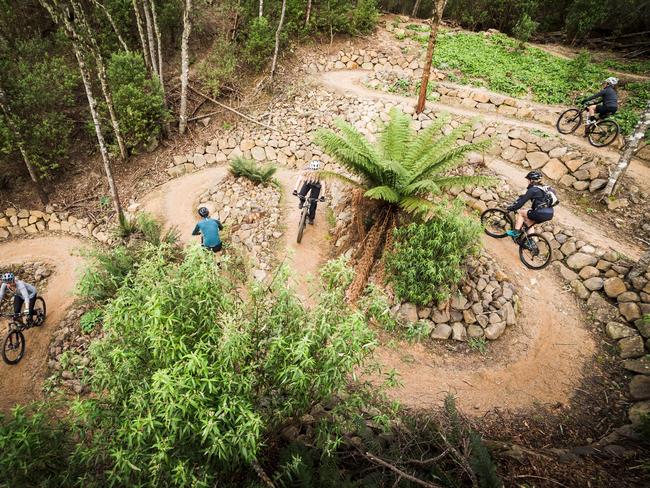
Why did Howell choose to focus on a mountain-biking venture? “Steve and I love mountain biking,” she says. “When you get on a bike, you can’t think about anything else. You are just focused on the trail, your body and your mind, and that is really sensational. You’ve been riding for about an hour, you’ve forgotten everything else. So when you are trying to create a tourism experience that takes people away from their everyday life, mountain biking does that really quickly.”
As for her wholehearted leap into the industry? It’s a perfect fit, she says. “I love what tourism does for the individual, giving them a perspective change that refreshes their life. But I also love what tourism does for the community. It showcases us to the rest of the world. As a visitor, you can explore the streets yourself, but if you are part of a tourism experience, you get the best of the best. I love that moment when you can be really proud as an operator and say, ‘yeah, I know, what we’ve got is amazing’.”
Staying true to what we are is crucial, she says. “The Tasmanian brand is mysterious. It’s an adventure of finding your way, which the campaign Discover Tasmania suggests. It obviously has elements of food and adventure, but it also has an alluring element that people want to be part of. If we were to add mass tourism to that brand, it would change the equity of it entirely.”
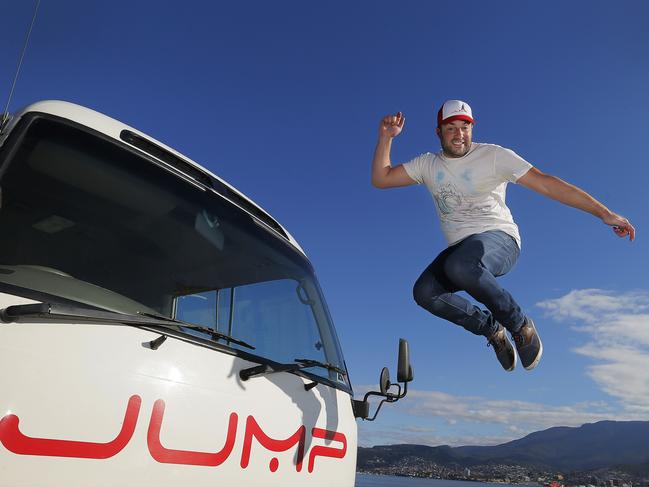
LEAP OF FAITH
Greg Price of Jump Tours is a former investment banker who realised the error of his ways young and leapt into tourism instead. He has never looked back.
Price, 37, has successfully ridden a fluctuating market for 11 years with his bus tours for backpackers, navigating everything from the global financial crisis to the backpacker tax.
His business is up 20 per cent in the past financial year, a top effort in a plateauing national backpacker sector. Last year Jump Tours won Best Tour or Transport Operator at the Tasmanian Tourism Awards. Price also represents the Backpacker Operators Network on the Tourism Industry Council of Tasmania board, where he is the de facto voice of the youth tourism market.
Tassie born and bred, Price headed to Sydney after university to become an investment banker at Macquarie Bank, among others. At 23, he had an epiphany when he was interviewing for a job at a Dutch investment bank.
“I asked them what a typical day looked like, and they said ‘6am-8pm’. I said, ‘Oh, so you are single fellas’ and they were like ‘No, I’ve got two kids, he’s got three kids’. I was like ‘Oh, OK, cool’, but I came out of that thinking ‘What are you guys doing? You might be able to buy your daughter a Porsche for her 18th birthday, but she probably won’t know who you are’. That’s when I realised I wasn’t cutthroat enough to succeed in investment banking.”
Backpacking around Europe inspired his next move. He kept finding himself slightly underwhelmed by well-known natural sites in Eastern Europe. “A lot of places you’d hear there was an amazing lake or waterfall and you’d get there and it would be pretty good, but not as good as what we have here. And no one really knew about these places in Tasmania.
“Most of Tasmania [was already] focused on the high end, and there wasn’t an easy way for backpackers to get around. The idea was to create an affordable way.”
He launched Jump Tours, operating out of Hobart, in 2007. A key decision was to make all tours self-catering to keep the prices down. Later he added a departure guarantee – no minimum number, all-weather. “It’s another selling point,” he says. “You don’t go on holiday to have stress so why create stress for the customer by leaving open the possibility their thing won’t happen? It made a big difference.”
[Mass visitation] is something we need to keep an eye on. Obviously we need to not ruin the whole reason people come here – which is for a small city feel, heritage and wilderness – but I think we are a very long way from having to worry too much.
Jump Tours offers a week-long Best of Tasmania tour, a five-day Lap of Tassie expedition and a Wild West Coast trip over three days, as well as three shorter trips. On the West Coast trips, guests stay in Tullah accommodation owned by Price, and elsewhere in backpacker hostels. To give a price measure, the seven-day winter trip costs guests less than $1000.
Given that Jump Tours is positioned at the bargain end of the market, how does Price feel about the possibility of mass tourism hitting Tasmania?
“I think I probably echo [Tourism Industry Council Tasmania chief executive] Luke Martin’s comments on keeping perspective on mass tourism talk,” says Price “It’s a really tiny tourism industry versus everything else that happens here – 1.2 million visitors a year is not a huge number.
“I think it was a bit strange that [Hobart Lord Mayor] Ron Christie decided to make those [negative tourism] comments over Dark Mofo, given we have only just managed to nail a formula to get people to come here in midwinter. Those visitors are filling hotel rooms and restaurants that would have been empty in June.
“[Mass visitation] is something we need to keep an eye on. Obviously we need to not ruin the whole reason people come here – which is for a small city feel, heritage and wilderness – but I think we are a very long way from having to worry too much.
“I would also make the point Tasmania has a natural restriction with access,” he says, referring to our island geography and the constraining effect of airlines offering a limited number of flights, a situation he says looks unlikely to change any time soon.
Price employs one staff member full-time and numerous tour guides/drivers at peak times. The business is highly seasonal, and for the past four winters he has been offsetting the low here by running Jump Tours in the Northern Territory’s Top End between June and September.
About 60 per cent of Jump Tours’ Tasmanian bookings come from Europe, 30 per cent from Asia, and the remaining 10 per cent from the US and Canada.
What’s their favourite Tassie destination? It seems to depend on the weather, he says with a smile. “Cradle Mountain on a good day, but if the weather’s better at the Bay of Fires, then there. And some people are just obsessed with wildlife and they see a wombat and it’s the best thing that’s ever happened.”
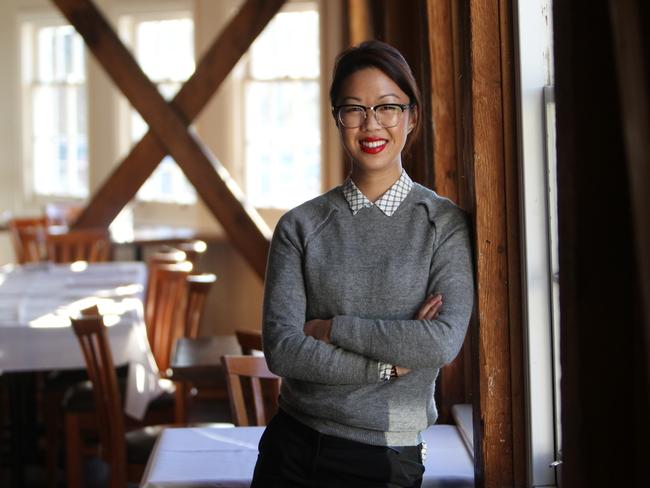
ON THE TABLE
Bianca Welsh decides where to travel based on what she can eat at her destination. The Launceston restaurateur is not alone – she says many tourists who visit Stillwater Restaurant and Black Cow Bistro are galloping gourmets who have come to the city especially to dine at the eateries.
“To me, food is the critical focus of travel,” says Welsh, 31, who has been recognised nationally for her front-of-house and management skills. “We all need to eat. It’s a necessity as well as a pleasure, but I know I travel based on what I want to eat and where I want to dine.
“Being in a regional and seasonal town, we see a really nice proportion of the market who are just travelling for food. A lot of people come to Launceston just to dine [with us]. As a single driver of visitation, it’s powerful.”
STILLWATER WINS TOP WINE LIST IN NATIONAL COMPETITION
Discerning diners make a beeline for the locally grown menu listings. “We have so much variety here and I appreciate that about Tasmania when I travel,” says Welsh.
“You go to these amazing parts of Italy and France that produce three to five things well [and that they are famous for]. Then you come back to Tassie and we have so many world-class ingredients: beef, oysters, quail, wallaby, salmon, white fish, herbs, periwinkles, pears, apple, citrus, stone fruit. Oh my God, then there’s the cherries, the dairy, wine, whisky and gin …”
Welsh says sharing ingredients’ provenance is an essential part of the job. “Tourists want an authentic, personalised experience. We train our staff to tell the story.”
BIANCA WELSH JOINT YOUNG RESTAURATEUR OF THE YEAR
Customer expectation is high since the MasterChef revolution, as she calls it. “The diner is so educated now,” she says. “If you want to be taken seriously, you need to know your stuff [because you are going to be asked] where is it from, how is it produced, is it organic?”
All of this is good news for Welsh, who has been a hospitality professional since her teenage years, cutting her teeth at McDonald’s. At 19, she started as a casual waiter at Stillwater, an established business in which she and sommelier husband James are now business partners. They are also part-owners of Black Cow Bistro. Later this year, they will branch into accommodation, when Stillwater, which is housed in an 1830s former flour mill on the Tamar riverside, opens seven guest rooms.
I love breaking stereotypes. I grew up with the mindset that I needed to get out of here to do something with my life. It wasn’t the case then and it certainly isn’t now.
Managing demanding restaurant careers with parenting and her part-time university studies in psychology is quite a juggle. Welsh says she and James are lucky to have both sets of grandparents helping to care for their son, Giacomo, who turns two next month. She started easing herself back into work when he was seven weeks old.
She is grateful for the mentoring and business opportunities her restaurant partners, particularly Kim Seagram and Rod Ascui, have offered her over the past decade. “It’s made a huge difference,” she says. “You can be very shy to introduce yourself, but when someone with great respect can help you make connections, it can do a lot for your career. It is invaluable.”
She reckons part of her success has come from rarely saying no.
“Saying yes to every opportunity has led to amazing things,” she says. “For example, giving a speech at my old college led me to be recruited for [my first] board position.”
She now sits on the Cornerstone Youth Services and Design Tasmania boards, and was on the selection panel for this year’s Young Australian of the Year for Tasmania, an award for which she was nominated two years ago. She says co-winning a national award for Young Restaurateur of the Year in the Electrolux Appetite for Excellence gongs in 2015 was a proud moment.
One of her goals is to foster a more supportive culture across hospitality, which can be a brutal and unsociable industry. She is also keen to spread the word about career opportunities in Tasmania for young people.
At her many high-school speaking engagements, one of her main messages to students is to strive. “[I speak about] not being stigmatised for going to a rough northern suburbs high school. I love breaking stereotypes. I grew up with the mindset that I needed to get out of here to do something with my life. It wasn’t the case then and it certainly isn’t now.”

